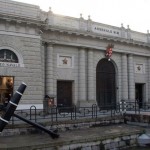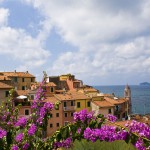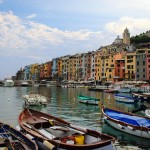A place where you can satisfy any personal curiosity about sailing and sea!
La Taranta (The Spider Dance)
A musical and social phenomenon from Galatina
Italia Slow Tour at Galatina (Lecce, Apulia) to investigate the musical and social phenomenon called Taranta, from the past to nowadays.
Who were this women called Tarantate and what origin had their malaise?
The only way to be cured was with the sound of the drum, it seems…
Cover pic courtesy of Flickr user foC’s
Video full text: La Taranta (The Spider Dance)
We are in the square in front of the Church of Peter and Paul in Galatina,
the place where the tarantate (women with mental crises) would come to be healed of their malaise.
The only way to be cured was with the sound of the drum,
with music, dancing and even by taking it out on Saint Paul.
After having drunk the water,
blessed by the spit of other women who, by tradition, possessed this power,
they would finally get better,
be cured and they would thank Saint Paul here in Galatina.I’m a little emotional,
because it is here that the tarantate women would come to be healed of the bite of the taranta spider.
Here, driven by the momentum of the taranta’s bite they would take it out on Saint Paul,
even to the point of spitting on the painting containing his image.
The painting is now being restored at the museum.
All sorts of things have been found on it, not just spit,
but grim organic traces too, even patches from the soles of shoes.
It has taken a lot of time to remove all those encrustations from the painting.
During the purification rite the women would be unwell,
they would vomit, throw themselves about the place, and behaved as though they were possessed.
They would dance for 24 to 48 hours, as can be seen in historical documentaries.
Then, only after having vented all their malaise, would Saint Paul free them of their ills.
This sound is truly Middle-Eastern,
and I’d really like to understand the sound of the drum,
because I associate it with those things I have seen in Africa, or among the dervishes.
Which is the sound that brings out the taranta in me?
It’s this…
……it has to come out!
Have you ever seen a tarantata in real life? No.
This occurrence is not as common as it once was.
It was associated with a socio-cultural problem that had to do with a woman’s condition,
and that, thank goodness, has changed a great deal.
The young people of today have never seen a real tarantata,
all they know are the pizzica (traditional dance) raves and the dance itself.
This gentleman, on the other hand, tells us timidly of having seen his grandmother in a trance.
When she was unwell they would bring her here.
The tarantate women would feel the pain and
this man’s grandmother would already sense an attack a month before,
and she had to move and dance.
They would bring her to drink the water from this well, which had the image of Saint Paul above it.
Then, into the little church, where the ‘possessed’ would crawl like spiders all over the altar in an unseemly manner,
and hurl abuse at the image of the saint.
They would throw themselves to the ground, possessed.
Ginetta, who has studied this phenomenon, can explain it better.
It was a form of solution that was found for the problem in this context.
It only meant something here and nowhere else.
Anywhere else it became an illness, whilst here it was accepted by everyone that it could happen.
Those who were afflicted by it were respected.
It was something bad not an illness.
These women would be living personal stories of marginalisation,
women who had perhaps been violated by male members of their family,
something that could not be divulged.
These were stories of impotence and pain.
The taranta was a way of escaping a cruel and ruthless reality.
Galatina, that was already a small city,
right up to the 1960s defended these women who were driven here by the most outdated situations in which they lived.
Then this was forgotten for around twenty years,
until it burst onto the scene as a musical phenomenon.
That’s where the search for its origins began once again.
I must be a little tarantata too!
Visit Apulia: helpful hints
Italian name: Puglia
Arrival
The Italian region Apulia is located in Southern Italy. There are four airports in there: the northern one is the Foggia airport, in the middle is the Bari airport, then going souther you can find the Brindisi airport and the Taranto airport. From all these airports you can reach several cities by bus and train or renting a car directly at the airport.
Transports
You can move around Apulia by car, buses or trains: check on the official tourism website a full list of all the options, included a useful bus & train schedule to and from the airports of Bari and Brindisi. Consider also the ferry option, to get to Tremiti Islands!
What to do
As mentioned, region Apulia is in the very South, the heel of Italy. Some places we recommend you to visit: Castel del monte, a great fortress UNESCO World Heritage site; the National Parks of Gargano and Alta Murgia; the Tremiti Island archipelago, especially San Domino Island. For a seaside holiday, plan your visit in Salento! Actually, the whole region is a great destination for sailing lovers: all along the coasts you can spot many wonderful marine caves and bays – i.e. Turkish Bay, Poetry Cave, Zinzulusa Cave, etc. Don’t miss a stop to Alberobello village, where are the famous Trulli (the traditional Apulian dry stone huts with a conical roof). Enjoy also some sightseeing around the local art cities (Lecce and Ostuni, first).
Some special tips by Italia Slow Tour: a bike tour on the bike lane of Itria valley and a visit to a typical Italian historical village – aka borgo – called Biccari. Don’t leave without a taste of some typical Apulia products like the burrata from Andria, the Altamura bread, the local taralli, the famous orecchiette fresh pasta and so on.














